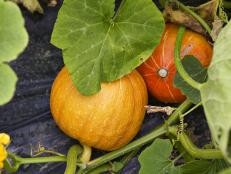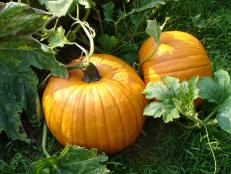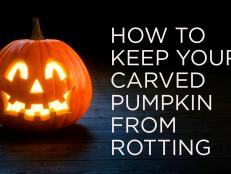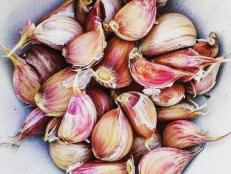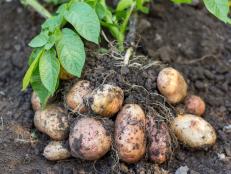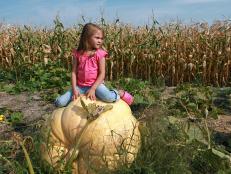Storing Pumpkins
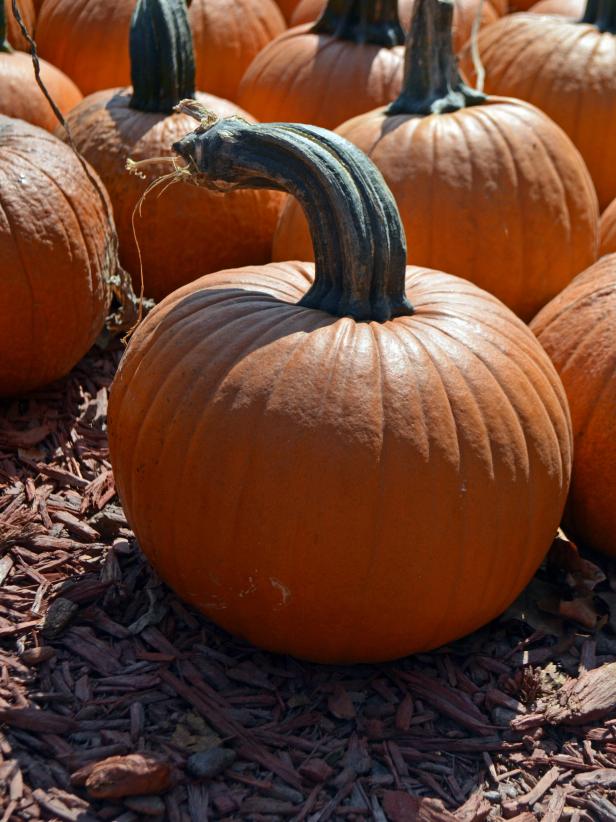
Image courtesy of Jessica Yonker
Whether you pick your pumpkin in your own backyard or a pumpkin patch, if you handle it properly, you could store it for 60 to 90 days. Storing pumpkins isn’t for everyone. Most people who store these hard-skinned fruits do so because they intend to eat it.
Pumpkin makes a wonderful addition to meal-time menus beyond the dessert chorus of pies, bars, and nut breads. Pumpkin is versatile in the kitchen and packed with good-for-you nutrition, including disease-fighting antioxidants and high levels of Vitamin A and potassium. Serve roasted pumpkin as a side dish or part of a salad with chorizo sausage and chickpeas, or prepare pumpkin soup, gnocchi, or gratin.
The pumpkin-storing process starts at harvest time. Always make sure your pumpkin has a well-attached stem. If the stem is detached at even one point, the pumpkin won’t store well and will need to be eaten or preserved quickly. Pumpkins store best when they’re harvested correctly, don’t have any bruises or wounds, and have been properly cured.
Pumpkin-palooza! 10 Pumpkin Varieties
See All PhotosCuring hardens a pumpkin’s skin to make it more impervious to attack by decay organisms. To cure pumpkins, place them in the sun for 10 days. Sunshine is what hardens the skins. Keep an eye on night-time forecasts while curing pumpkins. If frost is predicted, cover your fruits or move them into a shed or garage. If you garden where deer, skunks, raccoons, or groundhogs visit your yard, toss bird netting over curing pumpkins to foil nibbling critters. Skip the curing step if you simply plan to use your pumpkins in an autumn display and preserve them immediately afterwards.
After curing pumpkins, store them in a single layer in a cool, dry, dark spot with temperatures between 50 and 60 degrees Fahrenheit and humidity between 50 and 60 percent. In colder regions, good storage options include a cool basement area or an unheated attic or bedroom. In milder areas, an unheated barn, garden shed, or garage provides good storage.
Stored pumpkins may start to decay and weep juice from the bottom flower scar while the top looks perfectly fine. Because of this tendency, never store pumpkins—even for a holiday display—directly on wood furniture or carpets. Even if the pumpkin doesn’t weep, the moisture present in the fruit itself can damage wooden surfaces. Always slip a piece of plastic between pumpkins and wooden or fine fabric surfaces. Hide the plastic beneath a piece of fabric that won’t be ruined if the pumpkin weeps.
For long-term storage, place pumpkins on a porous surface, such as cardboard, wood, straw, or an old rug. Never place pumpkins directly on concrete or linoleum-type floors. The moisture in the floor, combined with the moisture in the pumpkin, leads to rapid decline.
Check stored pumpkins frequently—at least every other week—and use any that show signs of decay. When checking pumpkins, gently lift them (not by the stem) and check the bases for any signs of weeping or decay. Some of the best pumpkins for storing include New England Pie pumpkins, Fairytale pumpkins, and Long Island Cheese pumpkins.











